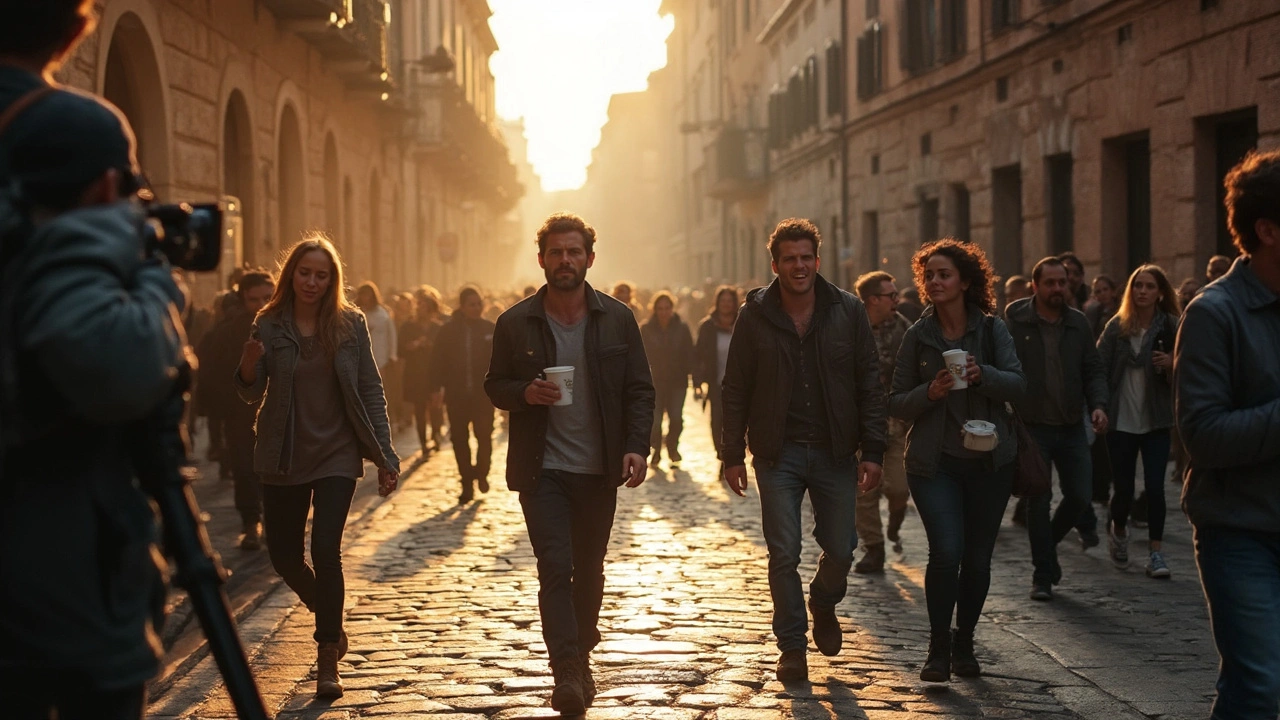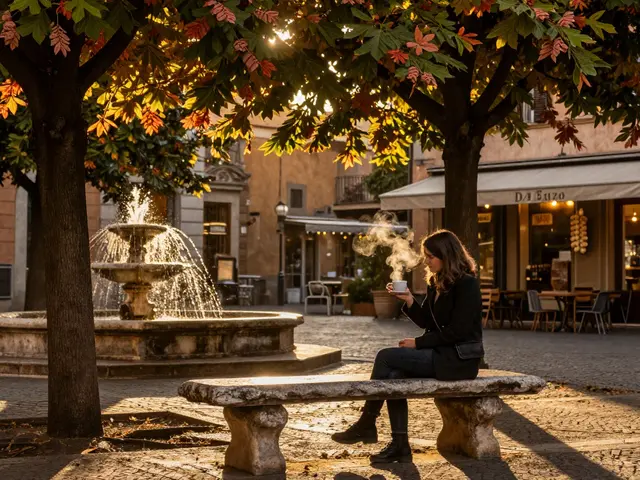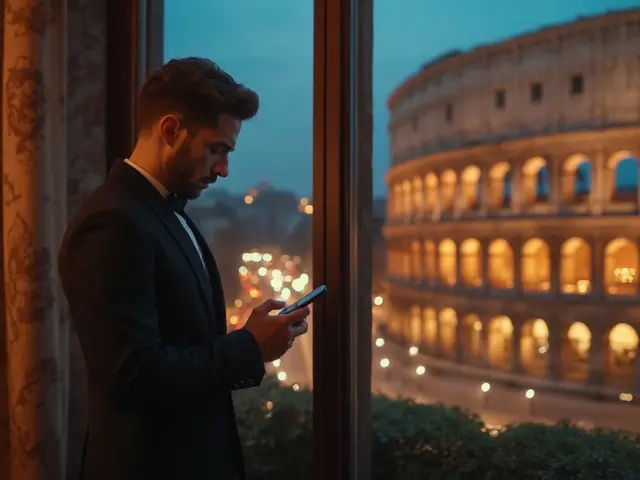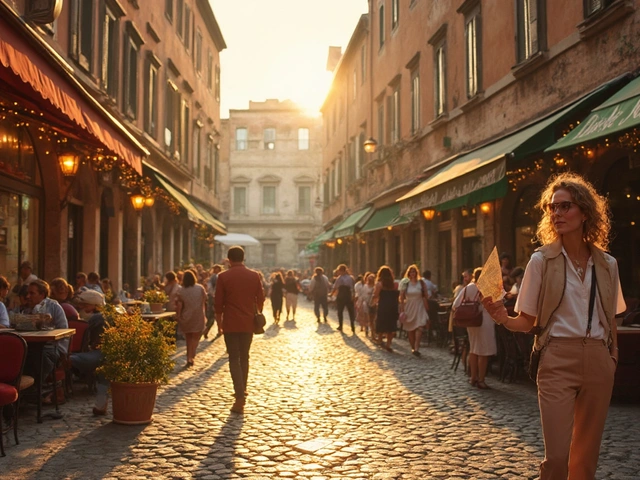Nothing in Italian film gets people talking quite like a project shot right on Rome’s busy streets. When you hear Malena Nazionale was made in the city, you might picture glamorous sets and perfect weather, but the reality is far more raw. Ever seen a film crew scramble to beat a sudden rainstorm or hustle through tourist crowds to keep a shot clean? That’s the real Rome film set, and it’s action-packed in its own way.
If you’re curious about what actually happens during the making of a high-profile movie like Malena Nazionale, you’re in good company. Crew members rarely sit still. One day, they’re transforming a run-down piazza into an eye-popping movie backdrop. The next, they’re reworking lines because a noisy scooter ruins the audio take yet again. Rome isn’t just a setting—it’s an unpredictable costar.
- Why Rome for Malena Nazionale?
- Set Life: Realities vs. Myths
- From Script to Screen: The Process
- Iconic Locations and Local Involvement
- Tips for Film Buffs Visiting Rome
Why Rome for Malena Nazionale?
There’s a reason the filmmakers behind Malena Nazionale picked Rome. Sure, it’s the heart of Italy. But more than that, Rome offers a wild mix of historic streets, modern chaos, and a buzz you don’t get anywhere else. Directors love how every corner of the city has an instant story to tell—no need for fake backdrops or special effects when you have the Colosseum literally down the road.
If you dig into the making of Malena Nazionale, you’ll hear that classic neighborhoods like Trastevere and Testaccio popped up over and over in scouting sessions. Why? Because locals live and hang out there. You see real Rome, not some tourist version. It helps the movie’s vibe feel honest and gritty. Plus, city permits for filming are actually easier to score than you’d think, as long as you work around the city’s crazy schedule and religious holidays.
Rome also makes sense for budget. Renting equipment, grabbing a crew, and finding extras can all happen with just a few calls. There are talented set designers and lighting pros everywhere. And since a lot of Italian cinema talent is already based in Rome, production can move fast.
- Historic Spots: Instantly recognizable for viewers, adding legit Italian cinema appeal.
- Access to Talent: From experienced actors to camera crews, most pros hang out in Rome—cuts down on travel costs.
- Practical Logistics: Plenty of film studios, props houses, and catering options make day-to-day filming smoother.
And here’s something a lot of outsiders don’t know—Rome actually runs its own film office. The Rome Film Commission helps out-of-town productions with permits, location ideas, and local contacts. In 2024, they handled over 160 film projects, proving that the city isn’t slowing down as a movie-making hub.
Set Life: Realities vs. Myths
People love talking about the magic of film sets, but the making of Malena Nazionale in Rome shows just how far from glamorous things can actually get. Picture less champagne, more coffee cups and calls for quiet. The “movie star lifestyle” rarely shows the 4 a.m. call times or hours lost waiting for the perfect Roman light. Crew members griping over street noise isn’t rare—it’s daily life.
One big myth? That film sets run on tight schedules. In reality, every outdoor shoot faces random delays. There were scenes blocked by a surprise marathon or a delivery truck parked in the only alley that matched the script. Actors and crew joke that no two days ever run according to plan. That’s not sloppiness. It’s just the unpredictable rhythm of city filming—especially in wild, beautiful Rome.
Here’s what people often get wrong about filming in Rome for Italian cinema:
- Locals don’t just watch: They end up in the background, ask questions, even offer lunch to tired crew. Some outdoor scenes from Malena Nazionale feature actual Romans who happened to pass through.
- Every shot takes time: That five-second montage in the movie probably took an hour to set up, light, and shoot—sometimes longer if a street performer rolled through mid-scene.
- Weather always wins: About 18% of scheduled exterior shoots on the film had to be pushed or canceled due to sudden changes in Rome’s weather, forcing last-minute changes and lots of creative problem-solving.
To show what a typical filming day actually looked like during Malena Nazionale production in Rome, check out these real numbers:
| Start Time | Average Takes per Scene | Unexpected Delays |
|---|---|---|
| 5:30 AM | 7 | Traffic jams, weather surprises, curious crowds |
Forget what you see in behind-the-scenes promos. The true daily challenge is juggling a living, breathing city while trying to keep the director’s vision alive. And when everything lines up for just a few minutes? That small victory feels like winning a trophy. That’s the real day-to-day of film production in Rome—not perfection, but persistence.
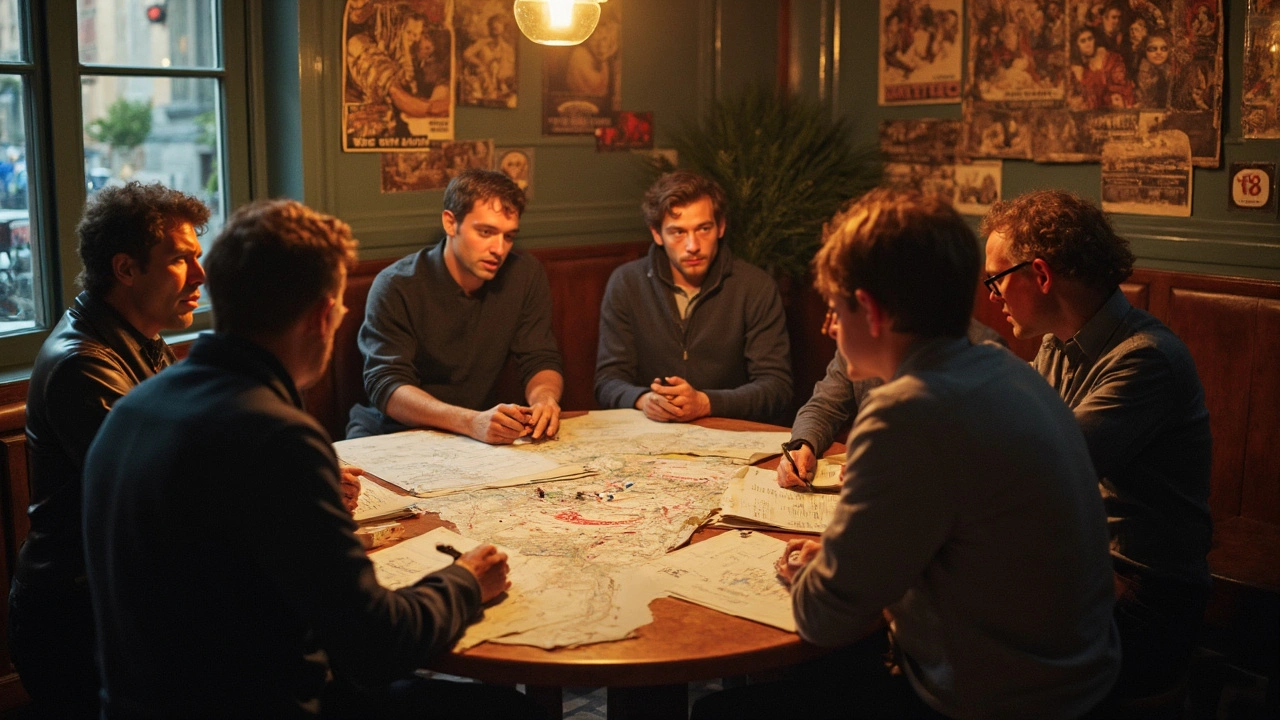
From Script to Screen: The Process
The journey of Malena Nazionale in Rome is tough, messy, and sometimes funny. Before cameras ever start rolling, it all begins with a stack of script pages and a head-spinning amount of planning. Producers and writers didn’t just whip up the script in one go. Meeting after meeting, they tweaked lines, switched scenes, and even changed locations to fit the city’s vibe and tight schedules.
Once the script felt right, the casting crew got busy. Finding talent in Rome isn’t always about big names—sometimes they scout local personalities who match the film’s edge. Rumor has it, one of the extras even got noticed at a Trastevere cafe. The point? Authenticity mattered, and the film production team wanted every face and accent to feel spot-on.
Shooting days start early and end late. A typical 12-hour day for Malena Nazionale meant juggling:
- Script read-throughs at sunrise on quiet streets
- Location checks (because Rome is way less predictable than a studio)
- Last-second script changes (especially to dodge crowds or noisy traffic)
- Actors slipping into roles while makeup gets rushed in back alleys
- Camera and sound crew troubleshooting gear under tight time windows
If you’ve ever seen a crew frantically covering up ancient Roman graffiti or haggling with a local for a couple more quiet minutes on their steps, you’ve seen real film production in action. Many scenes needed permits, and the city’s rules can be as stubborn as a Roman espresso vendor on a Monday morning.
One of the most surprising parts? A table read in February 2024 almost got derailed by a neighborhood power outage. Production raced to a nearby trattoria, read scripts by smartphone light, and managed to nail the story’s tone that evening. The hustle never stops.
For folks who geek out about numbers, here’s a quick breakdown:
| Stage | Typical Days |
|---|---|
| Script revisions | 20-30 |
| Location scouting | 15 |
| Filming | 42 |
| Post-production | 60 |
So, the next time you spot a movie set near the Coliseum, keep in mind: what looks like chaos is a well-practiced dance, and behind every shot is a crew that’s done way more than just show up and press “record.”
Iconic Locations and Local Involvement
You can’t shoot a Malena Nazionale movie in Rome without bumping into famous places. Piazza Navona is one of the busiest spots that pops up on screen—especially in the early chase scenes. Crew members say getting a quiet take there is a battle. Filming around the Trevi Fountain almost always means pulling an all-nighter because crowds never truly leave. For one scene at sunset, they only had a 12-minute window to nail the shot before tourists flooded back in. Trastevere also features in key moments, lending its gritty energy to more dramatic parts of the film.
What surprises a lot of people is how much the locals get involved. The city traffic police often play real roles in managing crowds or blocking off corners for fast-paced action. Many extras are real Romans, sometimes shop owners or students who got a last-minute text from someone on set. It adds to the authenticity. The bar scene halfway through? That’s an actual local hangout called Bar San Calisto. The owner didn’t just watch—he jumped behind the counter in a cameo. People recognized him right away at the movie’s street premiere.
Here are some of the key filming hotspots in Rome featured in Malena Nazionale:
- Piazza Navona – opening chase and crowd shots
- Trevi Fountain – dramatic turning point scene
- Trastevere alleys – gritty close-ups and late-night action
- Via del Corso – high-paced scooter sequences
- Bar San Calisto – real-life bar used in film
On top of that, the city government made it easier for the crew to get street permits in 2024. A small survey done by the local film commission reported that over 70% of businesses in these neighborhoods were happy to work with the production. Most said it brought a welcome boost, both for sales and for the city’s vibe.
| Location | Type of Scene | Local Involvement |
|---|---|---|
| Piazza Navona | Day crowds/chase | Extras, traffic police |
| Trevi Fountain | Drama/turning point | City permits, early morning crew |
| Bar San Calisto | Bar scene | Owner cameo, regulars as extras |
| Trastevere | Night action | Shop owners as extras |
If you’re hoping to catch a live shoot in the wild, hang out near these spots during early mornings or late nights. You’ll see how behind the scenes is way less glamorous and way more about teamwork than you’d expect.
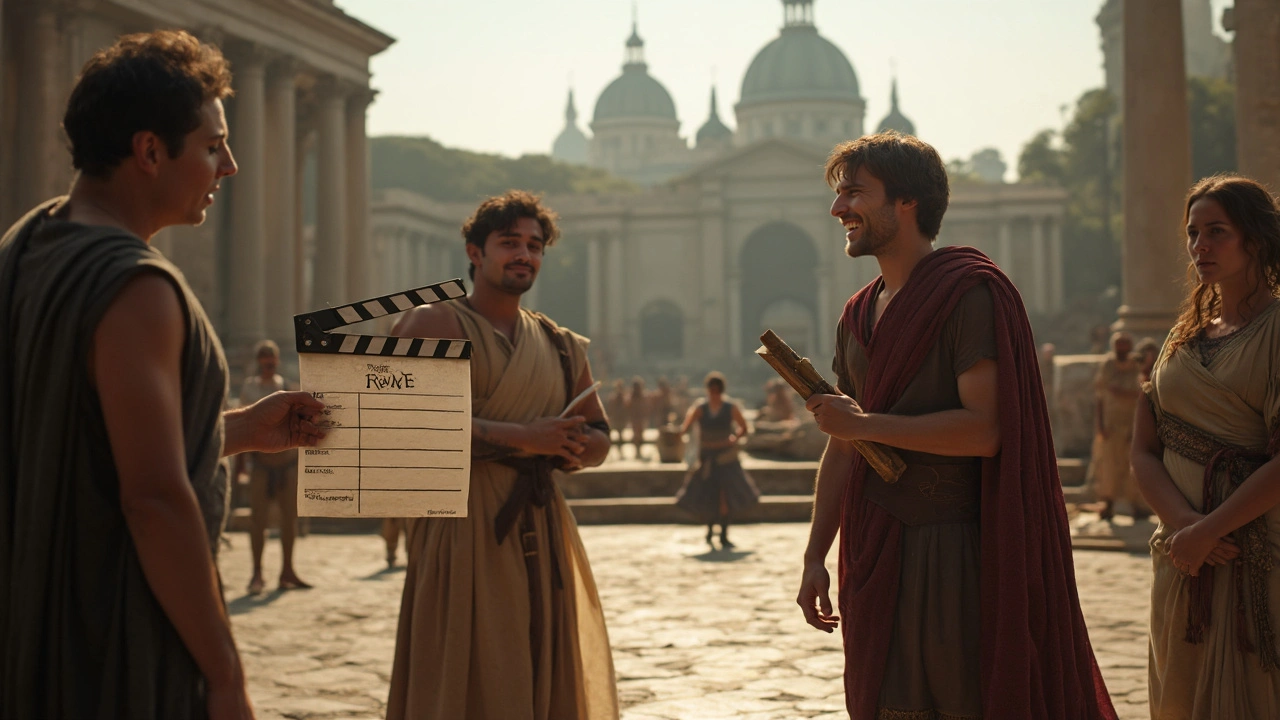
Tips for Film Buffs Visiting Rome
If you love Italian cinema or just geek out over movie sets, Rome is a goldmine. The city isn’t just about Colosseum shots or Vespa chases—real directors often use tucked-away alleys and offbeat neighborhoods to get that genuine Roman vibe in movies like Malena Nazionale. Here are some no-nonsense tips to help you get the most out of your movie-inspired trip.
- Scout Famous Filming Locations: Want to see places where crews worked on Malena Nazionale? Start with Trastevere. Its maze of streets turns up in tons of scenes. Then check out Via Margutta and Piazza Navona—they aren’t packed with tourists 24/7, and they’re top picks for those classic city shots. If you’re lucky, you’ll spot a shooting sign on the door or a crew packing up equipment.
- Time Your Visit for Spotting Action: More movie shoots happen in Rome from late spring to early fall. The weather’s steady, days are longer, and productions like to use natural light. Try mornings or just after lunch if you want to glimpse some behind-the-scenes hustle.
- Take a Guided Movie Tour: Several locals run walking tours focused just on Rome’s film history. Ask for updates on recent and classic movie locations—guides know where movies like Malena Nazionale filmed even the quick, blink-and-you-miss-it scenes.
- Befriend Crew at Cafés: It’s almost a guarantee you’ll find camera crew or actors grabbing an espresso at Caffè Sant’Eustachio or Roscioli. Most are cool about chatting—just don’t interrupt them mid-meeting or when cameras are rolling. Plenty have wild stories about Rome’s film scene.
- Bring Binoculars or a Zoom Lens: Think film crews are only downtown? Loads of scenes are shot on the run, especially in Testaccio or around the Tiber. A decent zoom lens lets you catch details from a distance, sidestepping security and crowds.
| Known Malena Nazionale Filming Sites | Year Used |
|---|---|
| Trastevere District | 2024 |
| Piazza Navona | 2024 |
| Via Margutta | 2024 |
Don’t be shy about asking locals for directions to movie spots—Romans are used to cinephiles asking, and someone always knows a little gossip about recent shoots. And remember: even if you can’t step on set, the city’s movie magic is all around, if you know where to look.

